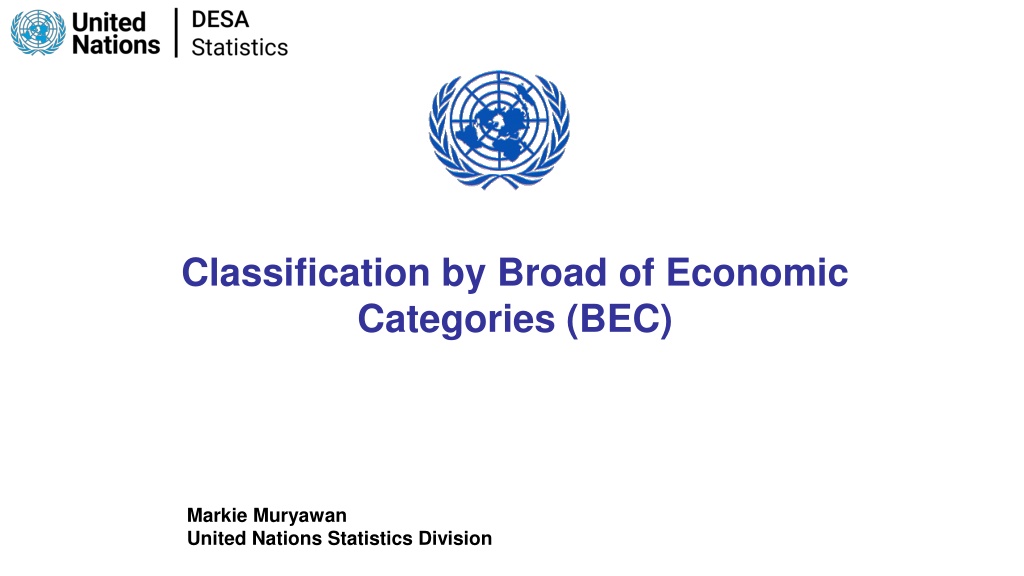
Understanding BEC Classification for Trade Analysis
BEC (Broad Economic Categories) is an international product classification system that provides broad categories for analyzing trade statistics related to end-use of products. The system has evolved over the years to enhance clarity and simplicity, aiding in trade research, tariff analysis, and development economics.
Download Presentation

Please find below an Image/Link to download the presentation.
The content on the website is provided AS IS for your information and personal use only. It may not be sold, licensed, or shared on other websites without obtaining consent from the author. Download presentation by click this link. If you encounter any issues during the download, it is possible that the publisher has removed the file from their server.
E N D
Presentation Transcript
Classification by Broad of Economic Categories (BEC) Markie Muryawan United Nations Statistics Division
BEC Broad Economic Categories (BEC) is an international product classification Main purpose is to provide a set of broad product categories that can be utilized for the analysis of trade statistics linked to end-use of products in SNA Intermediate, Capital and Final Consumption
Motivation to Revise Since proposed in 1965 and adopted in 1971, its structure and coverage remained unchanged despite Four revisions Changes in international trade Changes in economic accounting standards To provide greater clarity and simplicity in its structures: separate the dimensions of Broad Economic Categories and End-Use . This will lead to refinement of end-use in terms of HS and CPC. 3
Why using BEC? Trade Research the main focus has been on describing, assessing and explaining observed patterns in international trade, tariff effects, trade policy, and development economics Statistics Product flow analysis of imported goods and services
BEC and GVC Analysis Trade in terms of end use categories may be useful to highlight relationships in trade of Intermediate and final products Intermediate goods play important role in GVC analysis, with BEC Rev.5, more can be done
Streamlined Structure of BEC 5 BEC Rev.4 6
Inclusion of Services Due to growing importance of services; and growing interest to policymakers International sourcing for a wide range of services and business functions Time to include services in the BEC classification
SERVICES FLOWS Consumed in country B Services from country A to B Generic services (transport) Used as inputs in country B Specific services (computer services)
Breakdown of CPC and HS categories by top level BEC categories CPC Services BEC Broad Economic Categories HS Goods Agriculture, forestry, fishing, food, beverages, tobacco Mining, quarrying, refinery, fuels, chemicals, electricity, water, waste treatment Category 1 178 972 Category 2 75 983 Construction, wood, glass, stone, basic metals, housing, electrical appliances, furniture Category 3 224 1313 Category 4 Textile, apparel, shoes, jewelry, leather 88 895 Transport equipment and services, travel, postal services ICT, media, computers, business and financial services Category 5 136 180 Category 6 289 441 Category 7 Health, pharmaceuticals, education, cultural, sport 126 178 Category 8 Government, military and other 168 1284 139 5101 Total All products
Experience from Eurostat BEC Rev.5 brings together goods and services; and the end-use dimension For the first time Eurostat estimated the final and intermediate use of the EU trade in services as an experimental statistics
EU total trade volumes, partner Extra-EU (Billion Euro)
